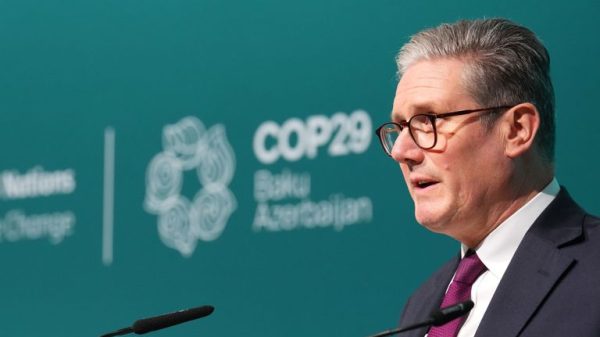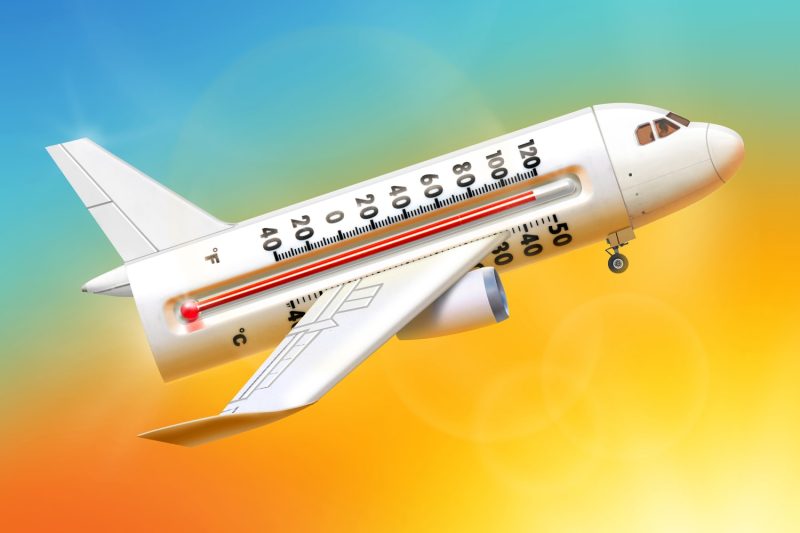It’s been another summer of record-smashing temperatures and record-smashing air travel. Airports and airlines say they can handle both.
U.S. airlines expect to transport 271 million passengers worldwide this summer, up 6.3% from last season, the Airlines for America trade group has projected. Carriers have added flights and seats — in some cases too many — to accommodate the uptick. It comes in a year when the Earth notched its hottest June ever, and as last week saw two days in a row break planetary heat records.
Nevertheless, the aviation industry is adjusting to “a new normal” of scorching temperatures during the busy summer travel period, said Kevin Burke, president and CEO at Airports Council International–North America. So far, airports have managed “to adapt to these conditions” by working with airlines to tackle safety risks and operational challenges, he said.
The U.S. Department of Transportation tracks “extreme weather” delays caused by conditions like tornadoes, blizzards or hurricanes but not those due to heat. And while the share of delay minutes caused by weather overall has declined in the last few decades, heat-related snags have been on display in recent years.
In July 2022, a scorching heat wave in Europe caused runway damage at London’s Luton Airport, briefly suspending flights. In June the year before, Alaska Airlines canceled and delayed flights due to record-breaking heat that had raised tarmac temperatures to 130 degrees Fahrenheit in Seattle and Portland and affected operations in California, Texas, Arizona and Louisiana. Ground crews were offered opportunities to take breaks in air-conditioned “cool down vans.”
In Las Vegas, which is seeing record highs again this summer, officials at Harry Reid International Airport (LAS) say the larger, heavier aircraft used for long-haul flights can have a harder time taking off.
It’s physics: “Airplanes perform better aerodynamically at cool temperatures, when the air is denser,” said Patrick Smith, a pilot and founder of “Ask the Pilot,” an air travel blog. Very hot weather reduces aircraft engines’ thrust, sometimes requiring longer runways to achieve liftoff and gain altitude.
To address that challenge in Vegas, “the air traffic control tower will institute a configuration change for takeoffs to the east, which avoids the mountainous terrain,” said LAS spokesperson Amanda Mazzagatti. “That configuration can cause slight delays for departures as it reduces the number of takeoffs per hour,” she said.
High temperatures sometimes require aircraft to reduce their weight before getting up in the air by shedding baggage, fuel or even people, said Robert Thomas, an assistant professor at Embry-Riddle Aeronautical University in Daytona Beach, Florida. Making these adjustments before takeoff “can also cause delays and anger passengers,” he conceded.
On days when temperatures rise more than expected, planes sometimes burn off fuel on the runway to reduce their weight, as one pilot recently explained on TikTok. But there’s only so much they can incinerate before there’s no longer enough to get to the destination.
High heat can pose mechanical challenges, Smith said. “Engines also are subject to internal temperature limits beyond which operation isn’t permitted, and when it’s really hot outside these limits are easier to exceed. I expect it to happen more frequently as climate change causes more extreme weather events, including extreme heat waves.”
But in Phoenix this year, where temperatures have soared well into the 110s this month, officials at Sky Harbor International Airport (PHX) insist they’re “well-prepared for Arizona summers,” with runways that can accommodate takeoffs and landings in hot conditions.
Preparations for summer weather begin each spring, said airport spokesperson John Trierweiler. Aviation department employees take a mandatory heat-safety course, and this year PHX added a video on the subject for all airport staffers, he said. During extreme heat, the airport urges employees to stay hydrated, take frequent breaks and, if they’re working outdoors, to cool off inside every hour.
“Passengers are also encouraged to use the airport’s water stations to stay hydrated in the Arizona heat,” he added.



























